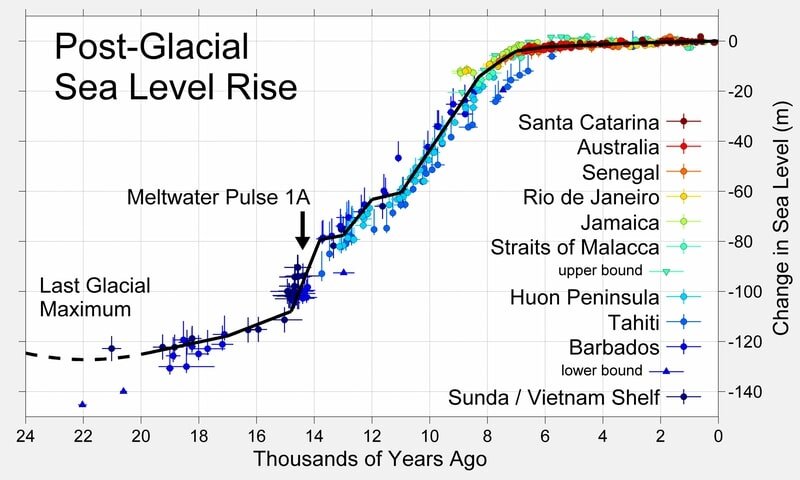
 |
No Evidence That Climate Change |
Post Reply 
|
| Author |
 Topic Search Topic Search  Topic Options Topic Options
|
reaper 
Admin Group 
Joined: 27 Jan 2022 Status: Offline Points: 326 |
 Post Options Post Options
 Thanks(0) Thanks(0)
 Quote Quote  Reply Reply
 Topic: No Evidence That Climate Change Topic: No Evidence That Climate ChangePosted: 15 Jun 2023 at 8:31am |
No Evidence That Climate Change Is Accelerating Sea Level RiseBy far the most publicized phenomenon cited as evidence for human-induced climate change is rising sea levels, with the media regularly trumpeting the latest prediction of the oceans flooding or submerging cities in the decades to come. Nothing instills as much fear in low-lying coastal communities as the prospect of losing one’s dwelling to a hurricane storm surge or even slowly encroaching seawater. Island nations such as the Maldives in the Indian Ocean and Tuvalu in the Pacific are convinced their tropical paradises are about to disappear beneath the waves. There’s no doubt that the average global sea level has been increasing ever since the world started to warm after the Little Ice Age ended around 1850. But there’s no reliable scientific evidence that the rate of rise is accelerating, or that the rise is associated with any human contribution to global warming. According to both Curry and  It’s clear that the rate of rise was much higher than its 20th century average during the 30 years from 1920 to 1950, and much lower than the average from 1910 to 1920 and again from 1955 to 1980. Strong regional differences exist too. Actual rates of sea level rise range from negative in Stockholm, corresponding to a falling sea level, as that region continues to rebound after melting of the last ice age’s heavy ice sheet, to positive rates three times higher than average in the western Pacific Ocean. The regional variation is evident in the next figure, showing the  You can see that during this period sea levels increased fastest in the western Pacific as just noted, and in the southern Indian and Atlantic Oceans. At the same time, the sea level fell near the west coast of North America and in the Southern Ocean near Antarctica. The reasons for such a jumbled picture are several. Because water expands and occupies more volume as it gets warmer, higher ocean temperatures raise sea levels. Yet the seafloor is not static and can sink under the weight of the extra water in the ocean basin that comes from melting glaciers and ice caps, and can be altered by underwater volcanic eruptions. Land surfaces can also sink (as well as rebound), as a result of groundwater depletion in arid regions or landfilling in coastal wetlands. For example, about 50% of the much hyped worsening of tidal flooding in Miami Beach, Florida is Historically, sea levels have been both lower and higher in the past than at present.  That the concerns of islanders are unwarranted despite rising seas is borne out by recent studies revealing that |
|
 |
|
| Sponsored Links | |
 |
|
Post Reply 
|
|
|
Tweet
|
| Forum Jump | Forum Permissions  You can post new topics in this forum You can reply to topics in this forum You cannot delete your posts in this forum You cannot edit your posts in this forum You can create polls in this forum You can vote in polls in this forum |